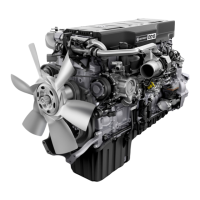
Do you have a question about the Detroit Diesel DD15 EuroIV and is the answer not in the manual?
| Brand | Detroit Diesel |
|---|---|
| Model | DD15 EuroIV |
| Category | Engine |
| Language | English |
Manual purpose and alert on using genuine/rebuilt components for emissions and warranty.
Cautions for personal injury, loss of vehicle control, exhaust hazards, and general safety during operation.
Cautions for personal injury, hot oil, fire, compressed air, coolant, and electrical systems during maintenance.
Cautions for air intake, lubricating oil, fuel systems, and battery handling.
Overview and visual identification of major components on the DD15 engine.
Information on identifying engine model, serial number, and certification label.
Essential checks for cooling, lubrication, and fuel systems before initial engine start.
Procedures for pre-lubricating the engine and checking/monitoring oil levels.
Ensures fuel shutoff valve is open and fuel tanks are full to prevent condensation and microbial growth.
Steps to prime the fuel system if air has entered, avoiding starter and pump damage.
Inspection of transmission, battery connections, and terminals for proper operation and corrosion.
Procedure for starting the engine and monitoring indicators and oil pressure.
Overview of the electronic control system regulating fuel injection and emissions.
Description and location of the Motor Control Module (MCM) on the engine.
Functionality and data sources of the Common Powertrain Controller (CPC).
How the DDEC software operates, including software upgrades and power supply issues.
Feature allowing operator to override automatic engine stop sequence for critical situations.
How malfunction codes are displayed via lamps and activated by the operator.
Procedure to read fault codes and overview of DDEC system features and data recording.
Covers driver controls, activation conditions, and operation of the engine brake system.
System monitoring for malfunctions, warnings, shutdown, and idle shutdown timer features.
Inputs and conditions for Cruise Control activation and how it can be overridden.
How the engine brake interacts with Cruise Control for speed management on grades.
Controls for engine brake on/off, power levels, and conditions for automatic operation.
How the engine brake operates, including minimum speed and precautions against misuse.
How ABS affects engine brake operation and DDEC system deactivation.
Guidelines for using the progressive braking switch on flat, dry surfaces.
Using the engine brake system for controlled speed descent on steep grades.
Overview of Fuel, Lubrication, Air, Cooling, Electrical, and Exhaust systems.
Purpose and function of the EGR system in reducing NOx emissions.
Guide establishing intervals for regular maintenance to ensure engine life and performance.
Importance of cooling system maintenance, flush/fill, and inspection.
Procedures for valve lash adjustment and drive belt inspection/replacement.
Inspection of Poly-V belts, auto tensioners, and fuel/water separator function.
Procedures for servicing fuel filter elements and air cleaner.
Checks for air-to-air charge cooler, exhaust, air compressor, vibration damper, and maintenance intervals.
Daily checks and procedures for monitoring engine oil level and servicing the oil filter.
Procedures for checking and maintaining the engine coolant level and system.
Daily checks for coolant leaks and procedures for managing coolant inhibitor levels.
Procedures for replacing cooling system and fuel filters at specified intervals.
Procedures for adjusting valve lash and inspecting belt tensioners.
Maintenance for air cleaner elements and inspection of the air intake system.
Inspection of exhaust system, air compressor, and fuel/fuel tank for proper condition.
Pre-start inspection of hoses and fuel lines for leaks.
Visual inspection of turbocharger, charge air cooler, and battery for condition.
Procedure for steam cleaning the engine and engine compartment.
Precautions for alternator work and procedure for lubricating the fan hub assembly.
Inspection and replacement criteria for the viscous vibration damper.
Covers oil selection, cold weather starting, synthetic oils, additives, and changing oil.
Covers fuel selection, quality, contamination, additives, and filter replacement.
Detailed steps for removing and installing fuel prefilters and coalescer/final filters.
Procedures for restarting after running out of fuel and cleaning the engine.
Covers cleaning the cooling system, radiator, and degreasing the system.
Covers coolant definitions, selection, approved coolants, and maintenance intervals.
Lists recommended/not recommended coolants, additives, and testing procedures.
Procedure for replacing the engine coolant filter at specified intervals.
Procedures for inspecting cooling system hoses and clamps for damage.
Maintenance procedures for dry type air cleaner elements, including replacement and cleaning.
Symptoms and probable causes of abnormal engine coolant temperatures and hard starting.
Symptoms and probable causes of rough running, low power, or detonation.
Symptoms and probable causes related to high oil consumption or low oil pressure.
Procedures for preparing the engine for temporary (30 days or less) and extended (over 30 days) storage.
Steps to prepare an engine for service after it has been in extended storage.
Contacting support, obtaining road service, and required information for assistance.
Information on the network of Detroit™ service outlets worldwide.
Details on fully formulated coolants, supplemental additive filters, and cleaners.
Products for Detroit Genuine Fluid Analysis, including test strips and bottles.
Engine oil capacities for DD Platform truck and coach models by application and emission standard.
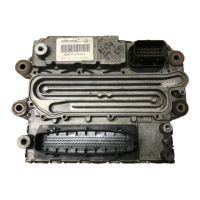
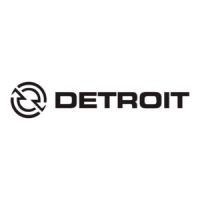





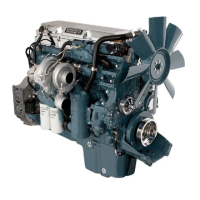

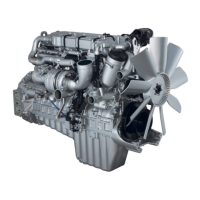
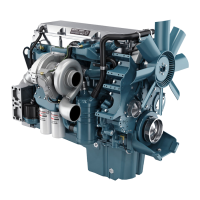
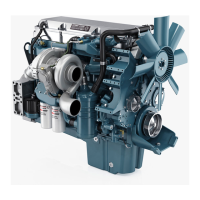
